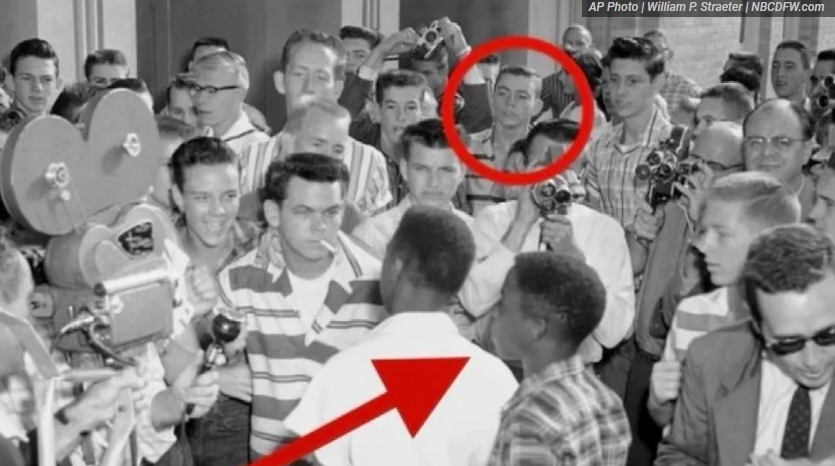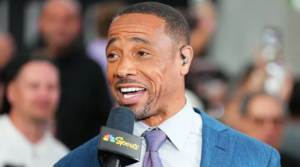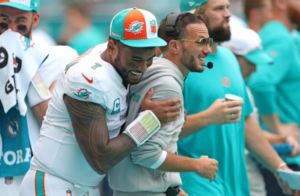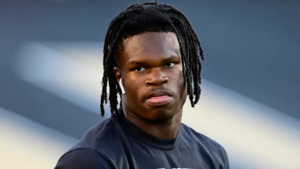
We need to talk about Jerry Jones. Again.
The Washington Post recently published an article chronicling Jerry Jones’ history as an employer of black men in a league that has been at the forefront of debates over the relationship between race and opportunity for decades now.
As its “jumping off point,” the article used a 1957 photo of a then 14-year-old Jerry Jones standing in the background while his white classmates attempted to intimidate six black students as they became the first to desegregate schools in Little Rock Arkansas.
That photo has understandably ignited some furious debate online, and it’s been fascinating to watch people put fairly recent historical events through the modern meat grinder of what some refer to as cancel culture, and others maintain as consequence culture.
I’m not here to talk about the way we’ve come to conflate social justice and social media justice. There’s not anything you or I can do to stem the tide of social media platforming everyone’s feelings all at once. The reality of the situation is that Jerry Jones isn’t losing the Cowboys over this. I’m asking you to acknowledge that reality so that we can talk about one way that Jerry Jones could actually do some good here.
Tensions in this country might feel at an all-time high right now, but the truth is this might not even be a top 5 era for American division. Sometimes we get caught up in the idea that because white people don’t agree on major issues across party lines, that’s the definition of division. How about the division that existed in the 1950’s- when it was an everyday public debate whether or not Melanized people like myself were worthy of basic Constitutional protections? There wasn’t a public consensus on whether or not we were even human beings.
Jerry Jones cited “curiosity” as his reason for making his way into the photo that day. On some level, I believe him. After all, curiosity isn’t the absence of hate, it’s often just attraction to spectacle. Cowboys fans should know this better than anyone- 90% of the people tuned in to watch the Boys in Blue on any given Sunday are active haters who are attracted to spectacle.
Jerry Jones likely spent his childhood in a homogenized environment surrounded by people that carried the popular public sentiment of the time, which was one that was coming to grips with the idea that black people weren’t quite property, but they also weren’t quite people. And it’s Jerry Jones’ direct connection to that time period that gives him an opportunity to talk about the exact path he and others like him had to travel to evolve out of that mindset.
I know for some, it’s never going to be enough for someone to repeatedly denounce the popular sentiment of the era they were raised in, they have to be a leader in every facet of every kind of socially progressive movement to perpetually atone for the sins of themselves and their kin. My message isn’t for people that carry that standard.
But for everyone else, with more realistic expectations of a billionaire born in the American South at the height of Jim Crow, what we really need is honesty.
We’re living in a time when the very idea of educating people on the history of how the dehumanization of black people has shaped our experience as a nation has become too bitter a pill to include in the educational curriculum of some Southern states. We can spend a semester talking about the revolutionary spilling of unjustly taxed tea, but we can’t spill the tea on the subsequent injustice of an unfairly taxed race.
Jerry Jones’ experience as a still-living, still-thriving, white, southern, American billionaire whose boyhood friends gathered to hatefully block the path of children whose only crime was desiring equal access to education has value.
Encouraging Jerry Jones to slink away into obscurity with billions in cash like Donald Sterling isn’t going to bring society maximum value here. Forcing an apology for something that happened seven years before the Civil Rights Act was passed, and 20 years before Tom Brady was born isn’t going to accomplish anything either. What we need from Jerry Jones at this moment is for him to open up about his time in a segregated south, and to use his platform to put context to all facets of that photograph. The visible anger. The fear. The spectacle. The bravery of the North Little Rock 6.
I’m not suggesting that Jerry Jones can solve racism, but I am saying that there are plenty of curious people gathered around the spectacle of this story- craning their necks for a better view. A story that at its root is one of triumph over hate. A story whose main characters shouldn’t be Jerry Jones, but instead be about Richard Lindsey, Gerald Persons, Harold Smith, Eugene Hall, Frank Henderson, and William Henderson, who showed up to North Little Rock High despite the school board telling them not to.
Jerry Jones has the opportunity here to make sure we know those names, and how their courage in the face of his “curiosity” helped push this country toward a more just future for everyone.
It’s an opportunity I hope he’s curious enough to take.
Let that sink in.







No comment yet, add your voice below!